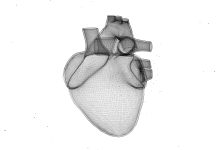Attention-Deficit/Hyperactivity Disorder (ADHD) often displays differently in women compared to men, but why? And how can we better support women with ADHD?
While boys are typically associated with hyperactivity and impulsivity, women are more likely to experience inattention and difficulty focusing on tasks. This difference in symptoms can lead to under-diagnosis and misunderstanding of ADHD in women.
The difference in symptoms: Why do women get missed?
One common symptom for women with ADHD is trouble focusing on singular tasks. This becomes especially clear with tasks that lack personal interest.
For example, starting a household chore like cleaning the bathroom might be easy, but maintaining focus until the task is complete can be a struggle. Similarly, engaging in new creative projects, such as knitting, might lose interest halfway through, leaving projects unfinished.
Women with ADHD can also experience periods of hyper-focus, where attention is intensely directed at a particular task or interest. During these times, stopping or shifting focus can be very difficult, as the brain becomes fixated on the activity at hand it often neglects other responsibilities.
Women with ADHD also tend to experience racing thoughts. While women may not show physical hyperactivity, cognitive hyperactivity is common.
This can display a rapid flow of thoughts, making it challenging to concentrate on a single topic or task. This mental restlessness can interfere with daily functioning and decision-making.
Social difficulties for women with ADHD
Maintaining friendships can also be difficult for women with ADHD. It’s not the initial making of friends that is challenging, but instead, the ongoing effort required to sustain these relationships.
After a demanding day, the emotional energy needed to respond to a friend’s message might be overwhelming. Also, intense focus on personal interests or tasks can lead to neglecting social connections, further straining friendships.
Emotional dysregulation is another frequent issue. Women with ADHD may experience heightened emotional responses to everyday situations. A small inconvenience at work could trigger disproportionate anger, or a friend’s change of plans might lead to extreme sadness.
Understanding and receiving help
Understanding these symptoms is crucial for women who suspect they might have ADHD. Seeking professional help can provide strategies and support for managing the unique challenges set by this condition.
Awareness and proper diagnosis can significantly improve the quality of life and personal relationships for women with ADHD. Effective treatment for ADHD in women often involves a multifaceted approach tailored to the individual’s specific needs.
Getting an accurate diagnosis is crucial, as ADHD is frequently overlooked well into adulthood. This diagnosis can help understand previously misunderstood behaviours and feelings.
With this awareness, women can feel more empowered to seek appropriate help and implement changes to manage their symptoms effectively. Treatment plans may vary based on the nature, severity, and impact of the symptoms but generally include a combination of medication, therapy, lifestyle adjustments, and support systems.
Why is ADHD in women less recognised?
Historically ADHD diagnosis criteria were largely set by studies done on boys.
This led to a bias in identifying the condition because the female presentation of ADHD does fit the stereotypical image it often goes unrecognised.
These factors combined can often lead to situations where women go undiagnosed until adulthood. This can have a significant impact on their lives and their general well-being.











